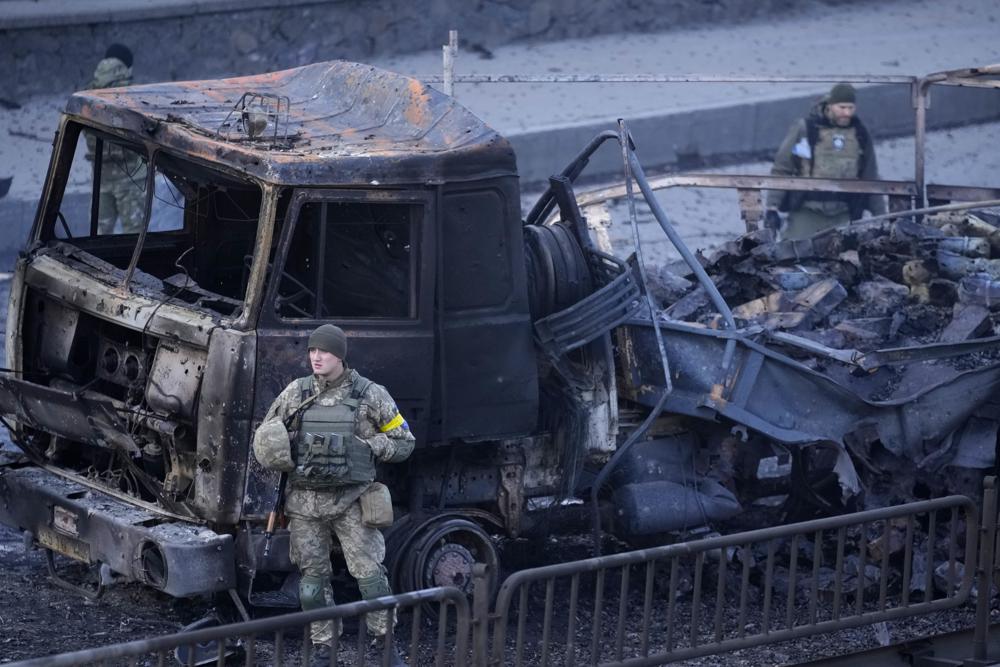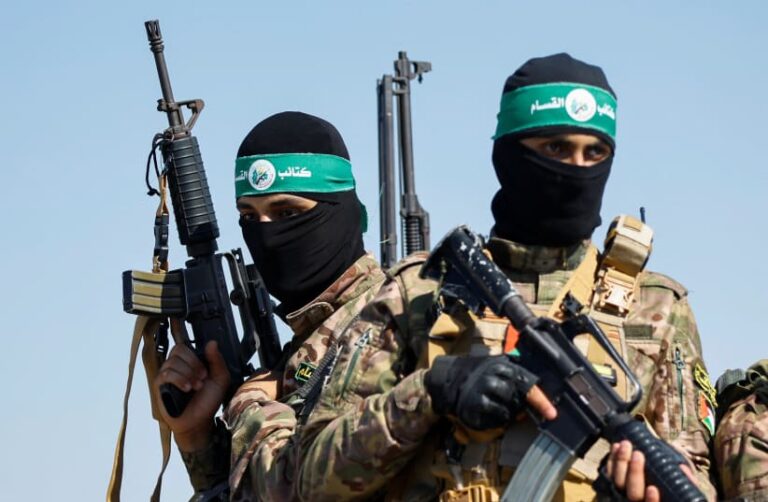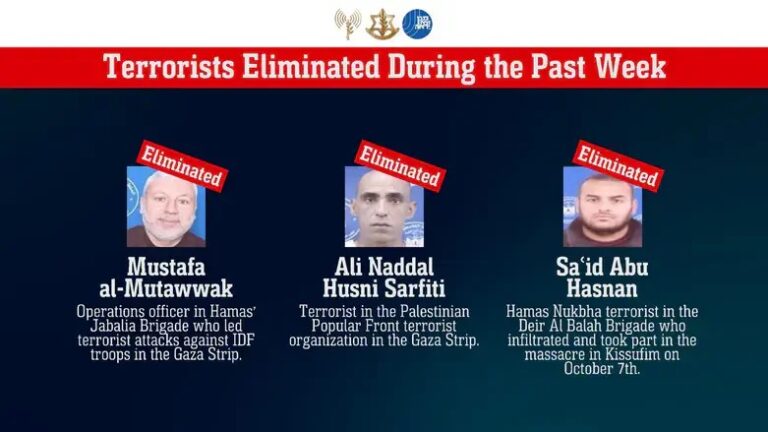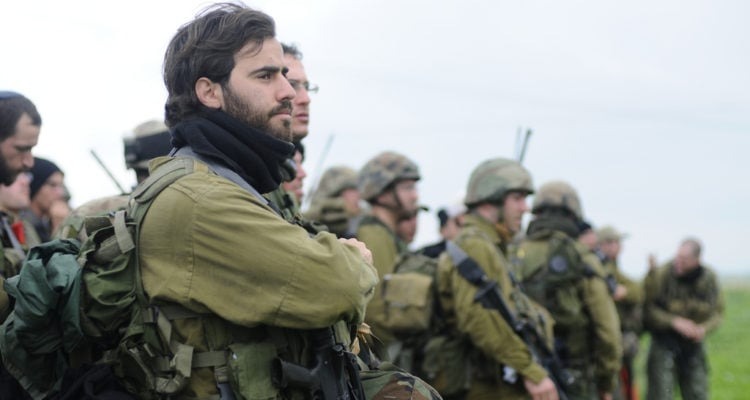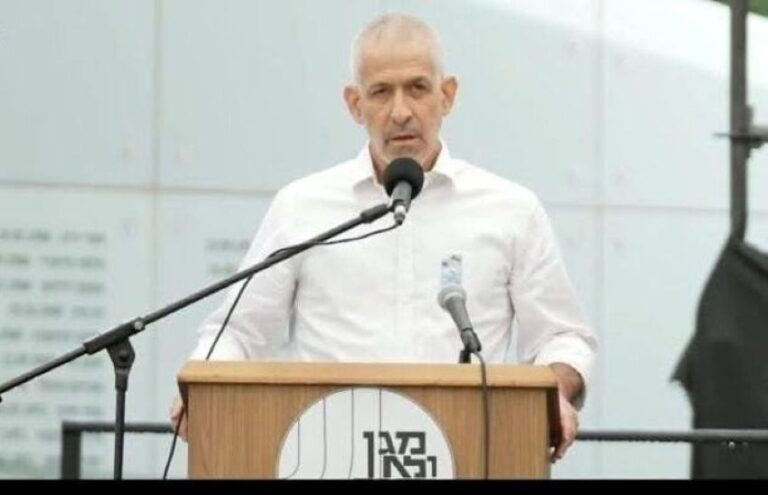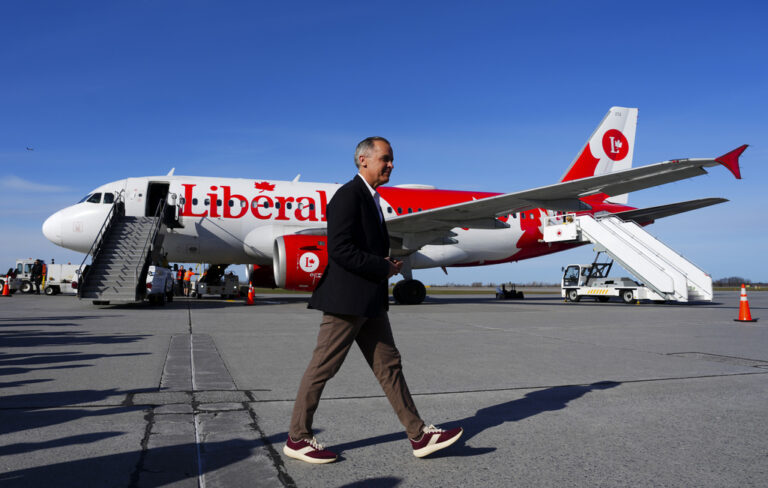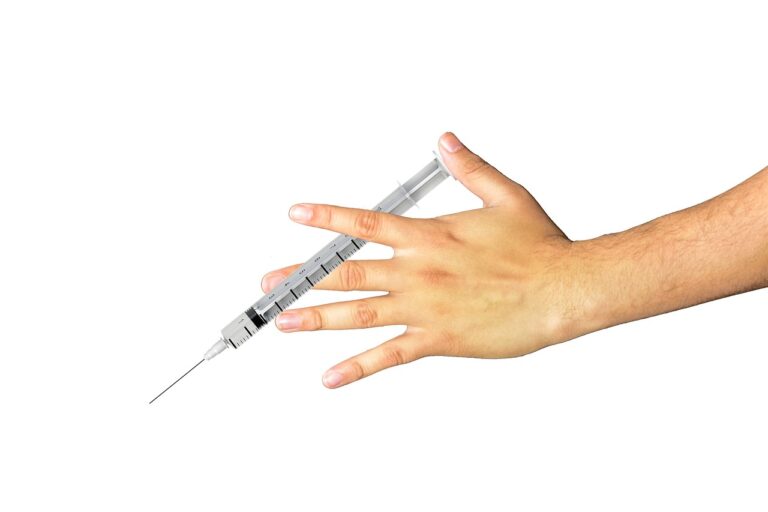After a barrage of airstrikes on cities and military bases around the country, Russian forces were closing in on Ukraine’s capital of Kyiv on Saturday. City officials warned of street fighting, and residents were preparing for a third night of assaults.
Here are the things to know about the Russian invasion of Ukraine and the security crisis in Eastern Europe:
WHAT IS GOING ON IN UKRAINE’S CAPITAL?
Central Kyiv appeared quiet Saturday, though sporadic gunfire could be heard. Ukrainian officials reported some success in fending off Russian assaults, but fighting persisted near the capital. Skirmishes reported on the edge of the city suggested that small Russian units were trying to clear a path for the main forces.
Britain and the U.S. said the bulk of Russian forces were 19 miles (30 kilometers) from the center of the city.
With growing signs that Russia aims to overthrow him and his government, Ukranian President Volodymyr Zelenskyy called on Ukrainians to “stand firm.”
Kyiv Mayor Vitali Klitschko extended the city’s curfew from 5 p.m. Saturday until 8 a.m. Monday to keep people indoors on Sunday. He said “all civilians on the street during the curfew will be considered members of the enemy’s sabotage and reconnaissance groups.”
ALLIES STEP UP TO AID UKRAINE
International allies put Russia under increasing pressure and pledged additional aid to help Ukraine in the coming days.
In a significant shift, Germany announced Saturday evening that it would send 1,000 anti-tank weapons and 500 “Stinger” surface-to-air missiles to Ukraine “as quickly as possible.” Those weapons are in addition to the 400 German-made anti-tank weapons Germany also approved to be shipped from the Netherlands, as well as 9 D-30 howitzers and ammunition from Estonia.
The Biden administration said it was sending Ukraine up to $350 million in arms and other defensive supplies from U.S. stockpiles with another $250 million in defensive support possible. The Czech Republic also approved a plan to send more arms to Ukraine.
In addition, various European countries — including the Czech Republic, Slovenia and the Baltic nations of Estonia, Latvia and Lithuania — have decided to close their airspace to Russian airlines.
WHERE IS UKRAINE’S PRESIDENT?
Zelenskyy, Ukraine’s president, has been posting video messages of himself and other national leaders in Kyiv since the invasion began on Thursday but his exact whereabouts were not publicly known.
Zelenskyy was urged early Saturday to evacuate Kyiv at the behest of the U.S. government but turned down the offer, according to a senior American intelligence official. The official quoted the president as saying “the fight is here” and that he needed anti-tank ammunition but “not a ride.”
In his latest message on Saturday, Zelenskyy said Russian attempts to forge into Kyiv have been repelled and Moscow’s plan to quickly seize the capital and install a puppet government has been thwarted.
“The real fighting for Kyiv is ongoing,” Zelenskyy said, accusing Russia in a video message of hitting infrastructure and civilian targets. “We will win.”
Zelenskyy has posted regular updates on his Twitter account and spoke with world leaders Saturday, including Turkish President Recep Tayyip Erdogan and Indian Prime Minister Narendra Modi. He also praised German Chancellor Olaf Scholz for Germany’s decision to send weapons directly to Ukraine.
RUSSIAN TROOPS MARCH ON IN UKRAINE
Kyiv officials are warning residents that street fighting is underway against Russian forces, who were trying to advance on the city from several directions. They advised residents to remain in shelters and avoid going near windows.
A senior U.S. defense official said the United States estimates that more than 50% of Russian combat power arrayed along Ukraine’s borders has entered Ukraine. That is up from a U.S. estimate Friday that one-third of the Russian force had been committed to the fight.
The official, who spoke on condition of anonymity to discuss internal U.S. assessments, would not say how many Russian troops that amounts to inside Ukraine, but the U.S. had estimated the total Russian force arrayed near Ukraine at more than 150,000.
Russian Defense Ministry spokesman Maj. Gen. Igor Konashenkov claimed Saturday that since the start of Russia’s attack, its military had hit 821 Ukrainian military facilities, 87 tanks and other targets.
Konashenkov claimed the Russian military has taken full control of the southern city of Melitopol, 35 kilometers (22 miles) inland from the Azov Sea coast, and said Russia-backed separatists have made significant gains in the eastern region of Donbas.
UKRAINIAN CIVILIANS IN HARM’S WAY
Russia claims its assault on Ukraine is aimed only at military targets, but bridges, schools and residential neighborhoods have been hit and civilians have been killed and injured during Europe’s largest ground war since World War II.
Ukrainian Health Minister Viktor Lyashko said Saturday that 198 people have been killed and more than 1,000 others have been wounded in the Russian offensive. It was not clear whether the figure included both military and civilians.
He said 1,115 other people, including 33 children, were wounded in the Russian invasion.
SOME UKRAINIANS FLEE TO SAFETY
U.N. officials said nearly 120,000 Ukrainians had left the country for Poland, Romania, Hungary and other neighboring nations and the number was going up fast as Ukrainians rushed to escape the deadly Russian onslaught.
Miles-long lines of vehicles clogged border crossings Saturday, mostly carrying women, children and the elderly. Others came on trains or buses. Authorities in neighboring countries mobilized to receive the Ukrainians, providing shelter, food and legal help and lifting COVID-19 entry restrictions.
“Shabia Mantoo, spokeswoman of the U.N. High Commissioner for Refugees., said the situation is “very fluid and changing by the hour.”
The agency says up to 4 million Ukrainians could flee if the situation deteriorates.
PROTESTERS TURN OUT ACROSS THE GLOBE TO CRITICIZE RUSSIA
From Tokyo to London to Taipei, Ukrainians living abroad and hundreds of protesters around the world have turned out on the streets to show their support for Ukraine.
Several hundred Ukrainians living in Japan gathered outside of Tokyo’s main train stations Saturday, chanting “Stop war!” and “Peace for Ukraine.” They held up signs including “No war,” “Stop Putin, Stop Russia,” while others waved Ukrainian flags.
In Taiwan, demonstrators chanting “Stand with Ukraine” and “Glory to Ukraine” protested outside the Russian representative office on Saturday.
Outside the Russian Embassy in an Athens suburb, protesters on Saturday chanted slogans and held posters with messages including “Russia go home,” “Putin burn in hell,” and “We need your help, world!!!”
Protests were also held in Milan, Rome, Belgrade, New York, London and Paris.
TURNING THE SANCTIONS SCREWS ON RUSSIA
The West has taken a military option in Ukraine off the table, but world leaders — with the exception of Moscow ally China — are preparing measures aimed at hurting the Russian economy and its leaders, including Russian President Vladimir Putin himself.
The United States, Canada and European allies all announced they are adding direct measures against Putin and his foreign minister, Sergey Lavrov. EU ministers have said even further sanctions were still possible, including booting Russia out of SWIFT, the dominant system for global financial transactions.
Russia on Saturday warned it could react by opting out of its last remaining nuclear arms pact and cutting diplomatic ties.
The deputy head of Russia’s Security Council, Dmitry Medvedev, said sanctions could offer Moscow a pretext for a review of its ties with the West, suggesting that Russia could cut them altogether. He also suggested that Russia could opt out of the New START nuclear arms control treaty that limits U.S. and Russian nuclear arsenals.
“We may look at each other in binoculars and gunsights,” he said.
SPORTING WORLD TURNS ITS BACK ON RUSSIA
Chelsea owner Roman Abramovich suddenly handed over the “stewardship and care” of the Premier League club to its charitable foundation trustees on Saturday.
The move came after a member of the British parliament called for the Russian billionaire to hand over the club in the wake of Russia’s invasion of Ukraine.
Abramovich, who has owned Chelsea since 2003, made no mention of the war in his statement.
In other news, Poland is refusing to play its World Cup qualifier against Russia next month in response to Russia’s invasion of Ukraine, the Polish soccer president said Saturday. Sweden also declared that its national soccer team would not play against the Russians.
In addition, Russia has been stripped of hosting the May 28 Champions League final by UEFA w ith St. Petersburg replaced by Paris, and Formula One dropped this season’s Russian Grand Prix in Sochi in September.
The International Ski Federation announced Russia will not host any more of its World Cup events this winter, and the European curling championships will be relocated from Perm, Russia.
The International Tennis Federation also canceled all events in Russia indefinitely.
(AP)

